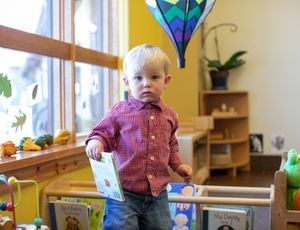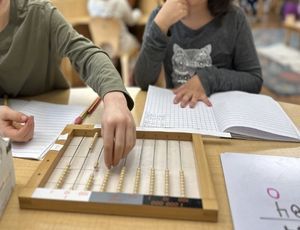During the first months of life, your baby will need to be on your lap many times a day to receive milk; regardless of whether it is breast milk or formula, this repeated experience of separation and attachment will give your baby the possibility to discover new aspects of the environment with the reassurance that some of the essential points of reference from the past are still present. In this month’s article, we will look into the importance of feeding your baby, the relationship that strengthens between mother and child, and the big difference it makes to be present while doing it.
Usually a two-month-old will be required to be fed about six or seven times a day; each time is an opportunity for the mother or another primary caregiver to connect with the baby. When the baby is born, her visual sense is not fully developed yet; she only has a clear vision of no further than 10 to 12 inches away, which is precisely the distance between the mother’s face and the baby’s face when being fed. This means that any interaction given in this intimate moment will impact the personal growth of the baby because it helps the union of the mind and body to achieve the child’s psychosomatic integration.
An Internal Feeling of Security and Stability
Newborns cannot take care of themselves; they are helpless not only at birth, but for a long time afterward. Satisfying your baby’s expectations regarding all the needs she has during different times of the day will strengthen her inner security and the stability she feels in this new world. Keep in mind that it is not only about satisfying an immediate need she has, but also about the enormous amount of sensorial and motor experiences you offer her while doing it.
Holding
Since your baby does not sit independently yet, every feeding time will involve holding and handling her. When we hold a baby, we transmit the information to her that she has a safe place to be and that her basic needs will be met. In a way, when the mother holds her baby, it re-establishes the mother-child unity, similar to the prenatal period; holding makes it possible to share life again, biologically and psychologically. Keep in mind that holding her is not only to give her food, but also for intimacy and nourishing a loving relationship. This is the first opportunity the baby has to learn about responses of adult human love, and this experience should involve love, acceptance, and respect.
Handling
Handling is body contact with the baby, mainly with our hands. When the baby is being fed, holding her in the mother’s arms is not the only way of providing information about the world. The way we use our hands will impact the interaction. We should never put the breast or bottle in the baby’s mouth. She should be offered the opportunity to smell it and feel it with the skin of her face. She should always attach actively to it, to ensure freedom of choosing when to eat. This is the foundation of her relationship with food; it should be presented with love and respect in front of her, not inside of her. The openings of our body are the borders with the external world; we must always feel in control of them. When we are not in control; we lose our sense of security.
Timetables
Babies do not need a set schedule to eat; every day, their body is different and requires different amounts of milk at different times. Feeding babies on demand requires observation from the adult.
Consistency
Have a designated feeding area for your baby. Include a comfortable chair in a calm place where you have everything you need (burp cloths, tissue paper, water, etc.). She will recognize it and will be able to predict what is coming next.
Item of the Month
Interlocking Circles
This is a grasping Montessori material that is composed of one full wooden circle and one with a slot card half the diameter of the circle. Initially, when placed on the baby’s hand, she will have a reflexive grasp; later on, it will be an intentional grasp. An older baby will do hand to hand transfer, roll it around, etc.
Link to buy it at Nienhuis:
https://www.nienhuis.com/us/en/interlocking-discs-nienhuis-montessori-usa/product/4906/
Is Montessori Education for Every Child?
This is a question often asked by many parents. Yes, Montessori education is for every child. The materials in the prepared environments allow children to learn visually, aurally, kinesthetically, and verbally. They are attractive to children in many different ways; some learn through observation, and some learn by doing. Every environment has freedom within limits; some children will find them constraining, and some will find the freedom too lax. Ideally, the child experiences the same limits and approach at home, keeping consistency, and helping him stay within them.



